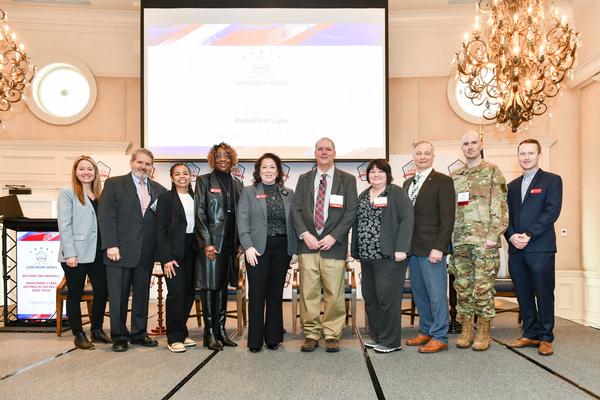The February chapter luncheon led by Indira Rice Donegan brought together industry leaders to explore the evolving landscape of cybersecurity, focusing on the critical framework of zero-trust (ZT) defense. The event featured a series of insightful discussions that highlighted the journey toward implementing effective ZT strategies.
Randy Resnick, senior advisor for the Zero Trust Office at the Department of Defense (DoD) Chief Information Officer (CIO), delivered a compelling keynote address that emphasized the importance of collaboration in developing actionable ZT architectures. His insights underscored how collective efforts can significantly enhance cybersecurity measures across various sectors.
DoD is at the forefront of ZT solutions, setting a benchmark that other federal civilian agencies aspire to replicate. This leadership role is crucial for establishing robust standards in a rapidly changing cyber environment.
Chief Warrant Officer 4 Ben Koontz, director of U.S. Army's Functional Management Office for Zero Trust at U.S. Army Headquarters, G6, discussed the effectiveness of user behavior analytics in identifying insider threats. His comments highlighted the necessity for strong monitoring systems to safeguard sensitive information from potential internal risks.
Kama Stone, chief information security officer (CISO) at U.S. Cyber Command, reminded attendees that achieving cybersecurity objectives requires continuous, incremental improvements. This approach fosters resilience and ensures the integrity of systems in the face of emerging threats.
The luncheon also featured discussions on exciting developments in artificial intelligence and machine learning, signaling a shift toward smarter, more adaptive defenses in cybersecurity. These technological advancements are expected to play a pivotal role in enhancing security measures.
Daryl Haegley, CISO/technical director, U.S. Air Force, addressed the ongoing efforts to integrate operational technology (OT) into standard processes, acknowledging the vulnerabilities that persist in these areas. His insights highlighted the need for comprehensive strategies to mitigate risks associated with OT.
Robert Mawhinney, DoD CIO director of cybersecurity policy and strategy, pointed out the challenges posed by legacy systems in reaching ZT targets by 2027. However, he also emphasized the opportunities for innovation that these challenges present, encouraging a forward-thinking approach in cybersecurity initiatives.
The discussions, moderated by Lauren C. Williams, reinforced the importance of collaboration and innovation in tackling the complexities of cybersecurity. As the industry continues to navigate these challenges, the commitment to fostering a safer digital future remains critical.
A special thanks to sponsors, including HashiCorp and GovTribe. Additionally, Robert Holm and On Ramps to Careers highlighted the vital role of STEM initiatives in nurturing the next generation of industry leaders. Together, we can pave the way for a more secure digital landscape.
|

(l-r) Shaleen Braley, chapter vice president of programs, poses for a photo with Randy Resnick, senior advisor for the Zero Trust Office at the Department of Defense (DoD) Chief Information Officer (CIO); Lauren Williams, moderator; Thelma Baker and Indira Donegan, board members; Robert Mawhinney, Kama Stone, Daryl Haegley and CW4 Ben Koontz, panelists; and Donald Murphy, chapter board member. |



